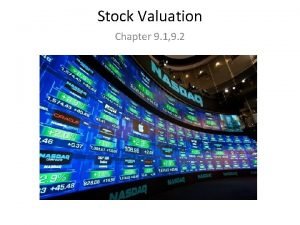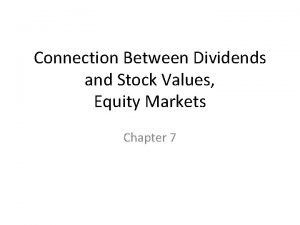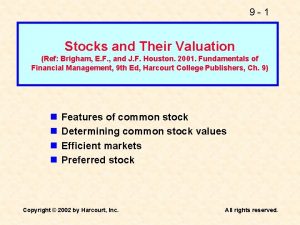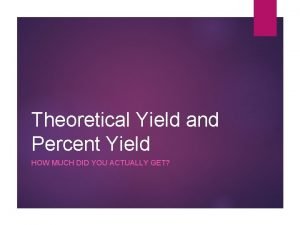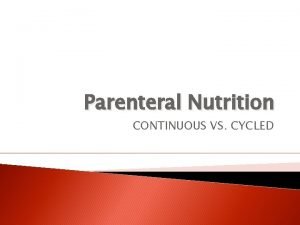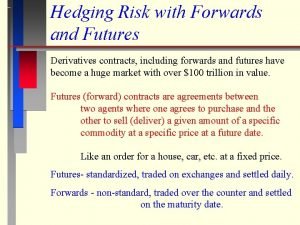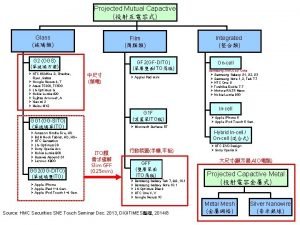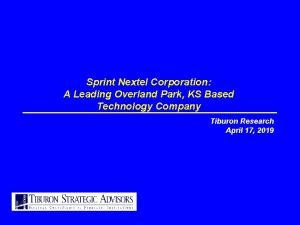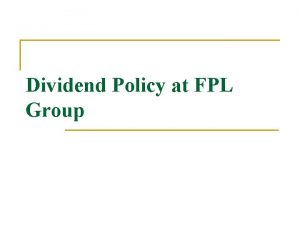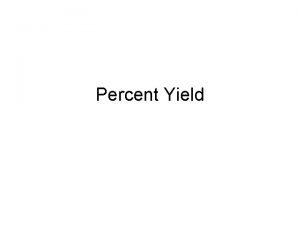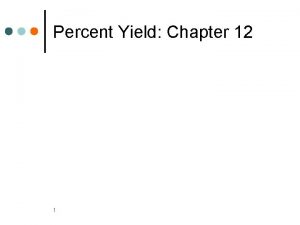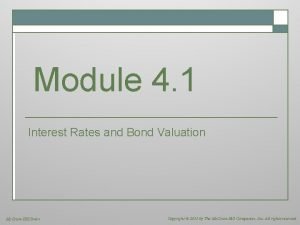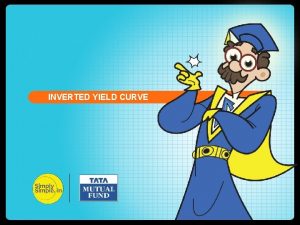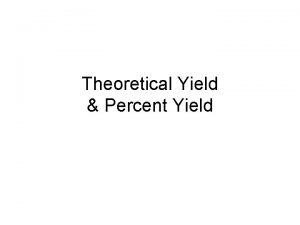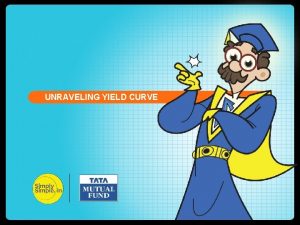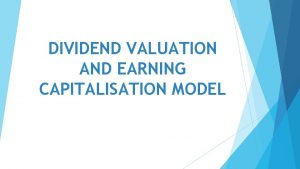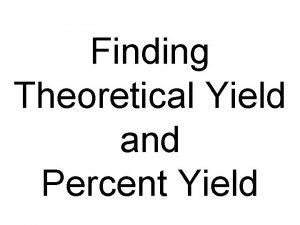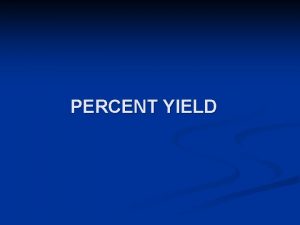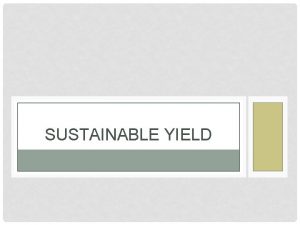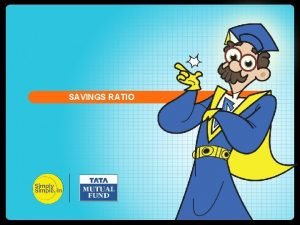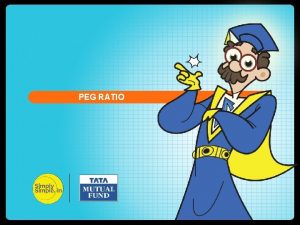FEDYIELD TAPERING DIVIDEND RATIO DIVIDEND YIELD RATIO Many














- Slides: 14

FEDYIELD TAPERING DIVIDEND RATIO

DIVIDEND YIELD RATIO § Many investors buy shares with the objective of earning a regular income from their investment. § Their primary concern is with the amount that a company gives as dividends. § Capital appreciation is usually a secondary consideration. § For such investors, dividends obviously play a crucial role in their investment calculations.

But

DIVIDEND YIELD RATIO § It is illogical to draw a distinction between capital appreciation and dividends. § Money is money – it doesn’t really matter to an investor whether it comes from capital appreciation or from dividends, or a varying combination of both. § In fact investors in high tax brackets prefer to get most of their returns through long term capital appreciation because of certain tax considerations.

DIVIDEND YIELD RATIO § Usually, companies that give high dividends not only have a poor growth record but often also poor future growth prospects § If a company distributes the bulk of its earnings in the form of dividends, there will not be enough to ‘plough back’ for financing future growth § ‘Plough back’ refers to reinvesting business profits back into the business for financing business expansion and growth

DIVIDEND YIELD RATIO § On the other hand, high growth companies usually have a poor dividend record § This is because such companies usually use a small proportion of their earnings to pay out dividends § In the long run however, high growth companies not only offer steep capital appreciation but also end up paying higher dividends as their business capacities begin to expand

DIVIDEND YIELD RATIO § On the whole , you are likely to get much higher total returns on your investment if you invest for capital appreciation rather than for dividends § It all boils down to whether you are prepared to sacrifice immediate dividend income for greater future capital appreciation and therefore higher future dividends § § It is basically a trade-off between capital appreciation and income This relationship between dividends and the market price of company’s shares is expressed by a ratio called ‘Dividend Yield’

DIVIDEND YIELD RATIO Dividend Yield Ratio It is expressed as: Yield = Dividend per share ------------X 100 Market Price per share Yield indicates the percentage of return that you can expect by way of dividends on your investment at the prevailing market price

DIVIDEND YIELD RATIO § Let us assume that you invested Rs. 2000 in buying 100 shares of XYZ Ltd. at Rs. 20 per share with a face value of Rs. 10 each § If XYZ announces a dividend of 20% (Rs. 2 per share), then you will get a total dividend of Rs. 200 § So, the yield on your investment is: Rs. 2 (Dividend) -----------X 100 = 10% Rs. 20 (Market Price)

DIVIDEND YIELD RATIO § Thus, while the dividend was 20%, your actual yield on the dividend earned comes to 10% § The concept of Yield is of far greater practical utility than dividends § It gives you an idea of what you are earning through dividends on the current market price of your shares

DIVIDEND YIELD RATIO § So, a higher dividend yield may be desirable from an investor’s perspective § But, a high dividend yield can also mean that the stock is under priced (low denominator) or that the future dividends might not be as high as previous dividends § Similarly, a low dividend yield might mean that the stock is overpriced (higher denominator) or that future dividends might be higher

DIVIDEND YIELD RATIO Hope you have now understood the concept of Dividend Yield Ratio.

In case of any query please email to professor@tataamc. com

DISCLAIMER The views expressed in this lesson are for information purposes only and do not construe to be any investment, legal or taxation advice. The lesson is a conceptual representation and may not include several nuances that are associated and vital. The purpose of this lesson is to clarify the basics of the concept so that readers at large can relate and thereby take more interest in the product / concept. In a nutshell, Professor Simply Simple lessons should be seen from the perspective of it being a primer on financial concepts. The contents are topical in nature and held true at the time of creation of the lesson. This is not indicative of future market trends, nor is Tata Asset Management Ltd. attempting to predict the same. Reprinting any part of this material will be at your own risk. Tata Asset Management Ltd. will not be liable for the consequences of such action. Mutual Fund investments are subject to market risks, read all scheme related documents carefully.
